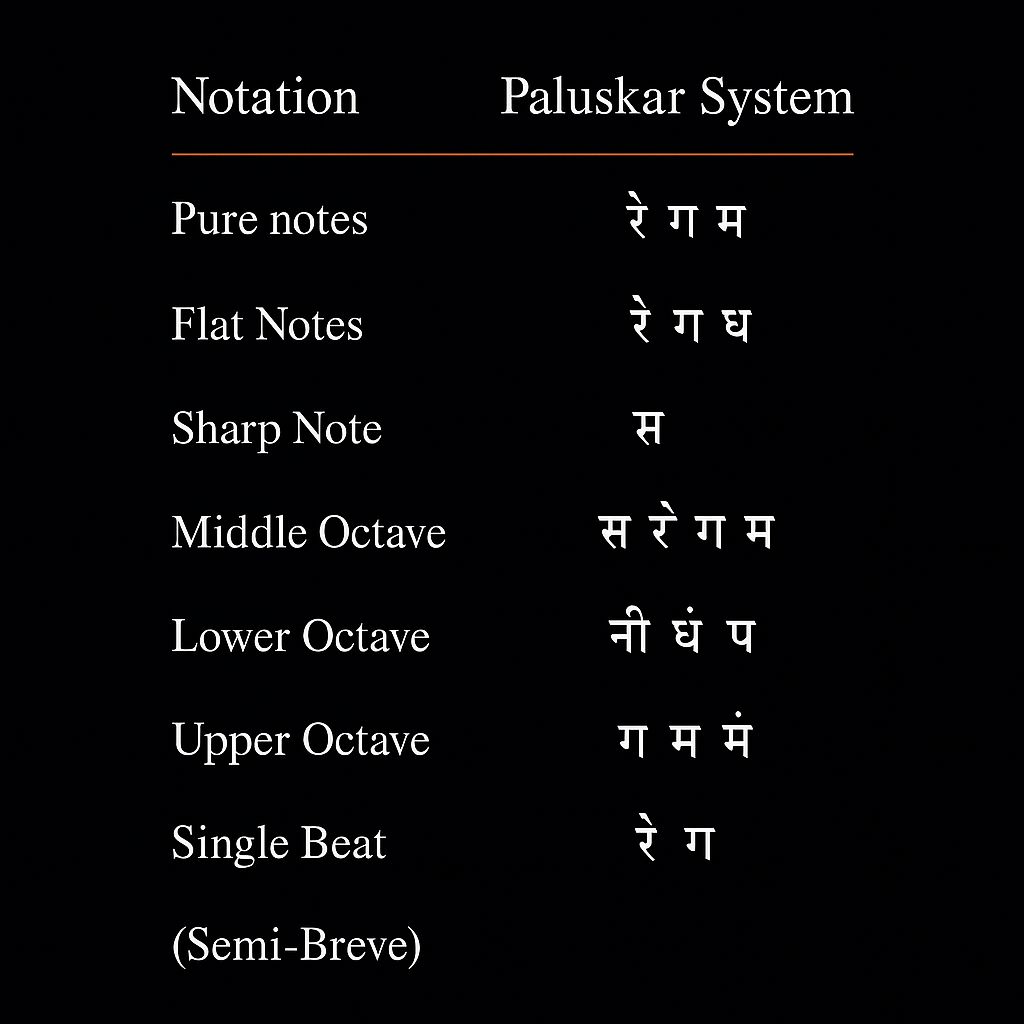The Evolution of Notation in Indian Classical Music

For centuries, Indian classical music flowed like an oral river—unwritten, unbound, yet richly nurtured in the hearts of its practitioners. Ragas were lived, not read. They were passed down from master called Guru to disciple called Shishya, from generation to generation, through the sacred tradition of the ‘Guru-Shishya parampara’.
But in this beautiful and immersive transmission lay a challenge. The lack of documentation meant that compositions could be lost, misinterpreted, or altered over time. It took a visionary like Pandit Vishnu Digambar Paluskarji, the founder of Gandharva Mahavidyalaya (Currently ABGMVM), to recognize the need for a written language of music—one that would preserve the soul of tradition while opening the gates of learning to a wider world.
Before notation systems emerged, Indian classical music lived entirely through voice and memory. Disciples would spend years absorbing not just the notes, but the nuanced essence of a raga from their guru. While this ensured deep internalization, it also kept musical knowledge confined to select circles. Replicating or standardizing compositions was nearly impossible.
in the early 20th century, Pt. Vishnu Digambar Paluskarji brought about a quiet revolution. Understanding the need for preservation and propagation, he introduced a systematic music notation using the Devanagari script. This was no small feat—it was the first time Indian classical music found a visual language that was both accessible and culturally rooted
Through hisperformances, teachings, books and the establishment of Gandharva Mahavidyalaya at Lahore in 1901, Pt. Paluskarji transformed the way Indian classical music was taught and learned. His notation allowed compositions (bandishes), ragas, and talas to be documented with clarity, empowering students across the country to learn music with discipline and consistency.
Pt. Paluskarji’s notation system broke barriers. What was once the preserve of a few became the property of many. This democratization of music education laid the foundation for structured music curricula, exams, and textbooks—many of which continue to be used and respected under the aegis of Akhil Bharatiya Gandharva Mahavidyalay Mandal (ABGMVM) today.
Today, even in the age of recordings and digital media, the notation system remains an essential pillar of Indian classical music education. Whether it’s a student preparing for a Akhil Bharatiya Gandharva Mahavidyalay Mandal’s examination or a scholar researching forgotten bandishes; notation provides structure, reference, and continuity.
It also acts as a bridge between tradition and technology. Music learning apps, e-books, and archival projects now incorporate this very system, enabling learners across the globe to access authentic Indian classical music resources in written form. The beauty of the system lies in its adaptability—it can coexist with oral training, enriching rather than replacing it.
As we look toward the future, the role of notation is only set to grow. With artificial intelligence now being used to analyze and even compose in classical frameworks, having a robust and adaptable written language of music is more important than ever.
Organizations like ABGMVM are uniquely positioned to lead this evolution—preserving the sanctity of tradition while embracing innovation. With over a century of dedication to classical music education, the Mandal continues to uphold Pt. Paluskarji’s legacy, not just by teaching notation, but by fostering a deep understanding of the art it represents.
The story of Indian classical music’s evolution is incomplete without the silent lines and curves of notation that carry the weight of centuries within them. Pt. Vishnu Digambar Paluskarji’s contribution was not just a technical innovation—it was a cultural awakening. He gave music a script, but more importantly, he gave learners a voice. As we move forward, the challenge is not just to preserve this system, but to pass it on with the same care and commitment that Pt. Paluskarji once envisioned.